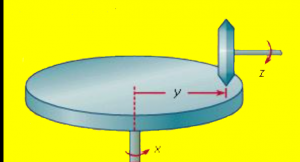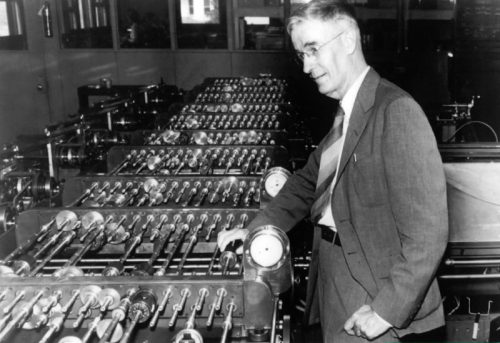Red Plenty by Francis Spufford
—-
The idea of centralized economic planning is a very seductive one. It just seems to make sense that such planning would lead to more efficiency…less waste…and certainly less unnecessary human suffering than an environment in which millions of decision-makers, many of them in competition with one another, are making their own separate and uncoordinated decisions, resulting in pointless product redundancy, economic cycles driving unemployment, and lots of other bad things.
Red Plenty…part novel, part nonfiction…is about the Soviet Union’s economic planning efforts as seen from the inside. The characters include factory managers, economic planners, mathematicians, computer scientists, and “fixers.” Published in 2010, Red Plenty is now quite timely in view of the current vogue for socialism in American political discussion.
Marx drew a nightmare picture of capitalism, when everything was produced only to be exchanged; when true qualities and uses dropped away, and the human power of making and doing itself became only an object to be traded. The alternative? A dance to the music of use, where every step fulfilled some real need, did some tangible good, and no matter how fast the dancers spun, they moved easily, because they moved to a human measure, intelligible to all, chosen by all.
How might this actually be accomplished? Stalin mocked the idea that planning an economy required much in the way of intellectual depth or effort. Get the chain of command right, Stalin seemed to be saying, build it on the right ideological principles, and all that was left was a few technical details, a little bit of drudgery to be carried out by the comrades at Gosplan with the adding machines. But it turned out to be a little more complicated than that.
Maksim Maksimovich Mokhov is one of the lords of the Gosplan file room, in which there are hundreds of folders, each tracking the balances and plans for a particular commodity. A good man, who takes his job seriously, Maksim has risen as high as you could go at Gosplan before the posts become purely political appointments..his was the level at which competence was known to reach its ceiling…Not just a mechanical planner, he realizes that the file folders cast only the loosest and most imperfect net over the prodigious output of the economy as the whole, and has worked to understand the stress points, the secret path dependencies of the plan. His specific responsibility is the chemical and rubber sector, and he is particularly concerned, at the time when he enters the story, about problems in the viscose subsector.
Arkhipov, Kosoy, and Mitrenko run one of the most important plants in the viscose supply chain, and they are three worried men. The plan goals aren’t being met, and they know that the path to career death is separated by only a few percentage points of plan fulfillment from the other one, the upward path, the road to glory and local fame. (A couple of decades earlier, it wouldn’t have been just career death on the table.) This plant makes two viscose-derived products, yarn and tire cord. The yarn line works fine, the tire cord line, not so much…but no problems with the machine can be found. There is no prospect of getting a replacement machine in any relevant timeframe.
Arkhipov and his associates come up with a plan to solve their problem…read the book to see what it is and how it turns out.
Nikita Khrushchev, in September 1959, told a crowd that “the dreams cherished for ages, dreams expressed in fairytales which seemed sheer fantasy, are being translated into reality by man’s own hands.” Modern technology, combined with the benefits of a planned economy would make it possible.
Because the whole system of production and distribution in the USSR was owned by the state, because all Russia was (in Lenin’s words) ‘one office, one factory’, it could be directed, as capitalism could not, to the fastest, most lavish fulfillment, of human needs.
The American exhibition in Moscow in mid-1959 (site of the “kitchen debate” between Khrushchev and Nixon) was attended by 3 million Soviets (including some of the characters in this book), and although many of them thought that the American claims of broad-based prosperity were exaggerated or worse, the experience surely helped feed the longing for a better life for the Soviet Union’s ordinary people.
Leonid Vitalevich Kantorovich pioneered the application of mathematics to the optimization of economic activities…these methods surfaced as a possible toolkit for the planning organizations circa 1960. Could these methods help achieve Khrushchev’s stated goal of broad-based prosperity?
For example, consider several factories, producing a common set of products but with different efficiency characteristics. Which products should be made by which factories in order to optimize overall efficiency? A set of equations can be constructed representing the constraints that must be observed–labor, machine utlization, etc–and the relative weighting of the variables to be optimized. Although these techniques have been used to a considerable degree in capitalist countries, they would seem tailor-made for a starring role in a planned economy. Selling the new methods in the Soviet Union, though, could be tricky: the linear-programming term “shadow prices”, for example, sounded like something that might have politically-dangerous overtones of capitalism!
One of the first applications involved potatoes, the distribution of same. The BESM (computer) is using Leonid Vitalevich’s shadow prices to do what a market in potatoes would do in a capitalist country–only better. When a market is matching supply with demand, it is the actual movement of the potatoes themselves from place to place, the actual sale of the potatoes at ever-shifting prices, which negotiates a solution, by trial and error. In the computer, the effect of a possible solution can be assessed without the wasteful real-world to-ing and fro-ing, and because the computer works at the speed of flying electrons rather than the speed of a trundling vegetable truck, it can explore the whole of the mathematical space of possible solutions, and be sure to find the very best solution there is, instead of settling for the good-enough sollution that would be all there was time for, in a working day with potatoes to deliver.
And even in the planned Soviet economy, there is still a market in potatoes, right here in Moscow, the leftover scrap of capitalism represented by the capital’s collective-farm bazaars, where individual kolkhozniks sell the product from their private plots…The market’s clock speed is laughable. It computes a the rate of a babushka in a headscare, laboriously breaking a two-rouble note for change and muttering the numbers under her breath…No wonder that Oscar Lange over in Warsaw gleefully calls the marketplace “a primitive pre-electronic calculator.”
So put the BESM to work minimizing distance that the potatoes have to travel..a proxy for efficiency and freshness: price is not a consideration, since the state selling price of potatoes has been fixed for many years. But BESM can only work with abstract potatoes: Not, of course, potatoes as they are in themselves, the actual tubers, so often frost-damaged or green with age or warty with sprouting tublices–but potatoes abstracted, potatoes considered as information, travelling into Moscow from 348 delivering units to 215 consuming organizations…The economists recognize the difficulty of getting a computer model to mirror the world truly. They distinguish between working at zadachi, ‘from the problem’, and of fotografii, ‘from the photograph’…This calculation, alas, is from the photograph. It deals with potato delivery as it has been reported to Leonid Vitalevich and his colleagues. There has been no time to visit the cold-stores, interview the managers, ride on the delivery trucks. But the program should still work.
The author notes that “the idea that the computer had conclusively resolved the socialist calculation debate in socialism’s favour was very much a commonplace of the early sixties.”
But despite all the planning paperwork, despite the attempts at computerization, people like Chekuskin remain essential to keep the Soviet economy functioning at all. He is a fixer, he works the system to ensure that his customers–factories, for the most part–can get the parts and materials they need in order to keep operating. Before the revolution, he was a salesman: now, the economic problem is not selling, but buying. Chekuskin explains what a real salesman was, back in the day:
You’re thinking of some fellow who works in a sales administration, sits by his phone all day long like a little king, licks his finger when he feels like it, and says, “You can have a litttle bit”…That’s not a salesman. You see, the world used to be the other way up, and it used to be the buyers who sat around examining their fingernails, hard enough as that is to imagine. A salesman was a poor hungry bastard with a suitcase, trying to shift something that people probably didn’t want, ’cause back in those days, people didn’t just get out the money and buy anything they could get their hands on. They had to be talked into it.”
But with Communism, the things changed. Back then, people didn’t want to buy. Now, they don’t want to sell. There’s always that resistance to get past. But the trick of it stays the same: make a connection, build a relationship.
Volodya, is a young propagandist recently assigned to the huge locomotive plant in Novocherkassk, a dismal town that also features a university. Unfortunately, it was classified by the planners as a “college town”, in need of the calorific intake required to lift pencils and wipe blackboards, but there were forty thousand people living and working in the industrial zone out by the tracks now, and between the students and the loco workers, a locust would have been hard put to it to find a spare crumb. White bread was a distant memory, milk was dispensed only at the head of enormous queues. Sausages were as rare a comets. Pea soup and porridge powered the place, usually served on half-washed plates.
Eventually, people can’t stand it anymore–and decisions by two separate planning organizations have the result that on the very same day, food prices are increased and so are the production quotas at the locomotive factory. There is a raucous mass protest, featuring signs like MEAT, BUTTER, AND PAY and CUT UP KHRUSHCHEV FOR SAUSAGES. The loco plant manager, Korochkin, does not handle the situation well, and the rage grows.
The ensuing catastrophe is vividly described as it is observed by the horrified Volodya. Troops open fire on the protestors: 26 people are killed an 87 wounded. Death sentences and long prison terms are handed down.
This was a real event: it happened in 1962. News about the events did not appear in the state-controlled press for thirty years.
Read more

